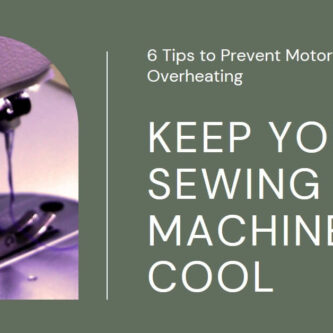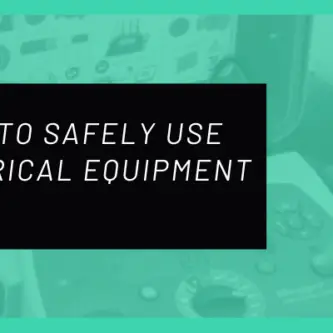Introduction Electricity is an essential part of our daily lives, powering our homes, businesses, and industries.
However, it’s important to handle it with care, as it can be dangerous if not properly managed. In an electrical circuit, different wires serve specific purposes, including neutral and earth wires.
When neutral and earth wires are linked, it creates a connection that can lead to electrical issues and safety hazards.
In this article, we’ll explore what can happen when these wires touch, the potential dangers of neutral-earth contact, and how to prevent it from happening.
What happens when neutral and earth wires touch?
In an electrical circuit, the neutral wire serves as the return path for the electrical current, while the earth wire provides a safe path for the fault current to flow to the ground.
The earth wire is also known as the grounding wire and is typically green or bare copper.
When the neutral and earth wires touch each other, electrical current can flow through the earth wire, creating a potential hazard. This can cause appliances and electronics to malfunction, and in some cases, even lead to electric shock.
Read also my article Don’t Get Zapped: Understanding Earthing and Neutral Wire Sparks
Effects on appliances and electronics
When electrical current flows through the earth wire due to neutral-earth contact, it can cause electrical appliances and electronics to malfunction.
This is because the electrical current may not be flowing through the intended path, which can cause damage to the equipment.
For instance, sensitive electronic devices like computers, televisions, and smartphones can be easily damaged by power surges or fluctuations in voltage, which can result from neutral-earth contact.
Risk of electric shock
Neutral-earth contact can also pose a significant risk of electric shock, which can be life-threatening.
When the earth wire is carrying electrical current due to neutral-earth contact, it can create a live circuit, where metal parts of equipment and appliances become live and pose an electric shock risk.
This can be particularly dangerous if someone comes into contact with the equipment or appliance.
Potential causes of neutral-earth contact
Neutral-earth contact can occur due to a variety of reasons, including wiring errors, damaged or faulty equipment, and external factors like lightning strikes.Some of the most common causes of neutral-earth contact include:
Wiring errors
Wiring errors are one of the most common causes of neutral-earth contact. This can occur when electricians make mistakes while wiring electrical circuits, such as incorrectly connecting wires or mislabeling them.
It’s important to have qualified electricians do any electrical work and to have regular inspections to ensure that everything is properly wired.
Damaged or faulty equipment
Equipment damage or faults can also lead to neutral-earth contact. For example, if the insulation on a wire is damaged, it can cause electrical current to flow through the earth wire.
Similarly, if a circuit breaker is faulty, it may not be able to trip when there is a fault, which can result in neutral-earth contact.
External factors
External factors like lightning strikes can also cause neutral-earth contact. Lightning strikes can generate a massive amount of electrical current, which can travel through the electrical system and cause damage to equipment, leading to neutral-earth contact.
It’s important to install proper surge protection devices to prevent damage to equipment from lightning strikes.
Preventing neutral-earth contact
To prevent neutral-earth contact, it’s essential to use proper wiring techniques, regularly maintain and inspect electrical equipment, and use safety devices like circuit breakers and surge protectors. Here are some steps to take to prevent neutral-earth contact:
Proper wiring techniques
One of the best ways to prevent neutral-earth contact is to use proper wiring techniques. This includes ensuring that wires are properly labeled, and correctly connected and that the correct gauge of wire is used.
It’s important to follow national and local electrical codes and regulations when wiring electrical circuits.
Regular maintenance and inspections
Regular maintenance and inspections of electrical equipment can help to prevent neutral-earth contact.
This includes checking for signs of wear and tear on wires, cables, and other electrical components, as well as ensuring that all electrical connections are tight and secure.
Regular inspections can also help to identify any potential issues before they become major problems, reducing the risk of neutral-earth contact.
Use safety devices
Using safety devices like circuit breakers, surge protectors, and ground fault circuit interrupters (GFCIs) can also help to prevent neutral-earth contact.
Circuit breakers can detect and interrupt electrical faults before they become a hazard, while surge protectors can help to prevent damage to electrical equipment from power surges or lightning strikes.
GFCIs can detect ground faults and quickly interrupt the circuit, reducing the risk of electric shock.
Grounding and bonding
Grounding and bonding are also essential for preventing neutral-earth contact.
Grounding provides a path for electrical current to flow safely to the ground, while bonding helps to ensure that all conductive parts of an electrical system are at the same potential.
It’s important to ensure that the neutral wire is properly grounded and bonded to the earth at the main distribution board or transformer.
Conclusion
Neutral and earth wires serve important functions in electrical circuits, but they should never touch each other.
Neutral-earth contact can cause appliances and electronics to malfunction and pose a significant risk of electric shock.
To prevent neutral-earth contact, it’s essential to use proper wiring techniques, regularly maintain and inspect electrical equipment, use safety devices like circuit breakers and surge protectors, and ensure proper grounding and bonding.
By taking these steps, we can help to ensure that our electrical systems are safe and reliable.


